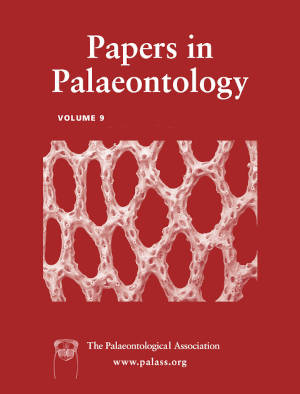Article: Healed injuries, ontogeny and scleritome construction in a Late Ordovician machaeridian (Annelida, Aphroditiformia)
Publication: Papers in Palaeontology
Volume:
9
Part:
4
Publication Date:
2023
Article number:
e1520
Author(s):
Luke A. Parry, Gregory D. Edgecombe, Jana Bruthansová, and Jakob Vinther
DOI:
10.1002/spp2.1520
Abstract
Abstract Machaeridians are armoured annelids that were morphologically diverse during the Palaeozoic. The scleritome developed from fleshy protrusions at the base of each parapodium, with alternating segments giving rise to differentiated inner and outer shell plates. The elytra-like anatomy of the shell-bearing soft tissues and distinctive jaw apparatus support an affinity of machaeridians with aphroditacean scaleworms. While frequently found as disarticulated remains, whole scleritomes of machaeridians are rare. Only a few species are represented by multiple articulated individuals, rendering many aspects of our knowledge of scleritome construction and growth uncertain. Here we describe a collection of articulated scleritomes of the plumulitid machaeridian Plumulites tafennaensis Chauvel from the Upper Ordovician (Katian) Upper Tiouririne Formation of Morocco that includes individuals representing both adult and juvenile stages. These scleritomes shed light on the morphology of the anterior region in plumulitids and show an increase in the number of shell plates with increasing size, suggesting that unlike some derived lepidocoleids, at least some plumulitids added segments repeatedly during ontogeny. Shell plates with a distinctive umbo have previously been assigned exclusively to the anterior region, but our material shows that they are present along the scleritome, with corresponding sclerites on the opposite side of the skeleton showing normal morphologies. We suggest that these plates are abnormal and best explained as healed injuries, replacing plates that had been previously removed from the body, demonstrating the capacity for machaeridians to regenerate lost body parts, a feature that is widespread in living annelids.
